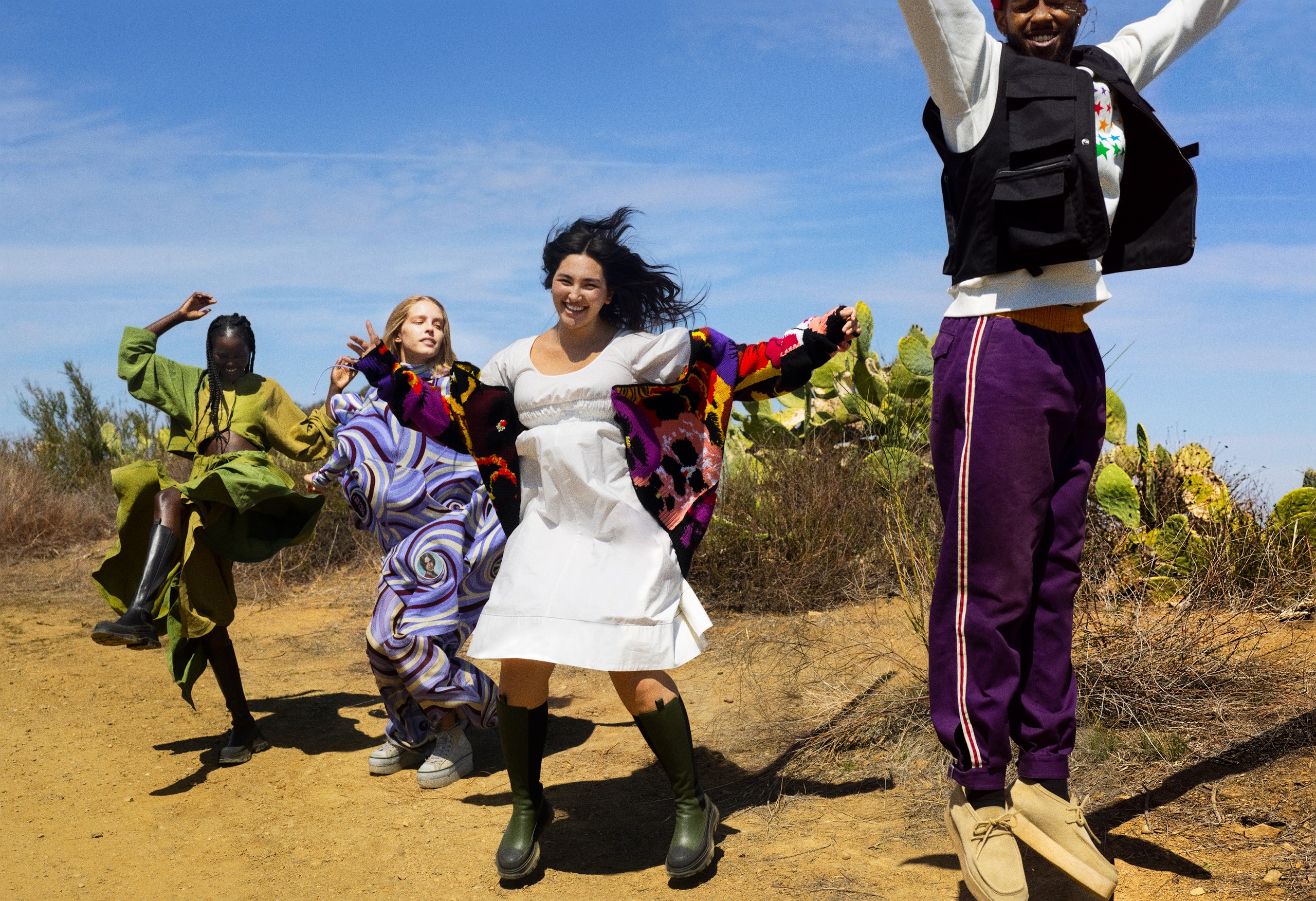“F ind a partner! We’re doing the mirror exercise. This is your chance to get somebody else to do something weird.” Dressed in a leopard-print crop top and a high-cut-briefs-and-tights combo hijacked from the ’80s, the actor and choreographer Angela Trimbur is guiding us through her sold-out Sunday dance class in midtown Manhattan. As the Crystal Waters track “100% Pure Love” starts up, I’m face-to-face with a pregnant woman named Brooke, cycling through chest thrusts and elastic facial grimaces. She pantomimes picking her nose—appropriately, gleefully weird—and I join her, the two of us swaying in unison like doo-wop stars transplanted to the set of PEN15.
Called Thirteen, Trimbur’s underground-sensation class is an emotional odyssey delivered through dance, with a nostalgic nod to her mother’s ’90s-era studio in Pennsylvania. Trimbur became internet famous in 2018 for candidly chronicling her breast cancer treatments at 37, an experience that recentered the body—however messy and real—as a means of self-discovery and connection. Now, with her tween rewind, she’s shepherding a different kind of transformation. “I’m kind of going back to that time because that was my most free,” Trimbur explains after class, as participants’ cell phone videos of her eccentric choreography begin to circulate online. Two years into the pandemic, it feels oddly right to tug on kneepads and slide across the floor.
Alternative dance classes like these are in overdrive, popping up in converted warehouses and on virtual platforms engineered during the COVID lull. It’s a fitness phenomenon as old as Trimbur’s eBay-sourced leotards. By the 1984 Los Angeles Summer Olympics, Jazzercise had so transfixed the culture that its creator, Judi Sheppard Missett, ran in the torch relay, with 300 instructors performing at the opening events. But today’s cult classes aren’t fixated on the aspirational body-shaping of yore; instead they’re serving up communion, psychic release, and fun.
“Pure joy” is the tagline of Moves, the all-levels class led by longtime friends and dancers Lauren Gerrie and Marisa Competello. When Moves started by word of mouth more than a decade ago, it was in part an East Coast homage to L.A.-based choreographer Ryan Heffington’s exultant classes—movement-induced euphoria that carried over to his highly trafficked Instagram Live sessions early in the pandemic. This spring, when Heffington packed a soaring studio space for the first time since lockdown, he kept the choreography simple, he tells me, “so people could get that spirit out ASAP.” You can expect the same all-smiles energy—plus Afro-Caribbean hip rolls—at this summer’s nationwide Socanomics pop-ups, led by L.A. trainer Selena Watkins. Gathering the online devotees of her Carnival-inspired workouts has a family-reunion feel: “Nothing can replace that energy,” says Watkins.
Intuitively, we know that the benefits of dance go well beyond metrics. What sets it apart from more straightforward, gym-based training is what Emma Redding describes as the “biopsychosocial element.” A pioneer in the field of dance science and the director of the Victorian College of the Arts at the University of Melbourne in Australia, Redding points to recent findings suggesting that dance is related to a sense of “belonging, identity, autonomy, perceived confidence—all these really important aspects of well-being,” she adds. This resonates with me, an introvert who grew up in ballet studios, and who has long used dance as an expressive outlet in good times and bad. I once shook off a breakup by spending solo nights at a nearby club, hoping to get lost in the dark fog. When a questionable guy sidled up, my rebuff was blunt: “Sorry, I’m here for a private exorcism.”
That moment shimmers to mind on a Sunday morning at Dance Church, where the mood instead is public exhilaration—dozens of congregants spread out in a downtown Manhattan studio, jamming to Blood Orange and Grimes. The idea for the class started in Seattle back in 2010, with choreographer Kate Wallich seeking a “place where I didn’t have to worry about technique,” she says of a guided structure built around pelvic drops and arm pulses amid freestyle bursts. The COVID shutdown sparked a quick pivot to digital; now, with a recent $4.7 million seed round, there is a membership model in place and in-person classes reopening across tentpole cities. “The elevator pitch used to be, ‘It’s the dance party you wish you had last night,’ ” Wallich says. Now, you can add: sanity saver, newfangled aerobics, a way to process grief. “One of our future goals is to be in the health care system,” she continues, envisioning Dance Church as a mix of therapeutic uses. But as I walk jelly-legged out of the room, it already feels like medicine: worries drained from my mind, airways alive, feet firm beneath me.


